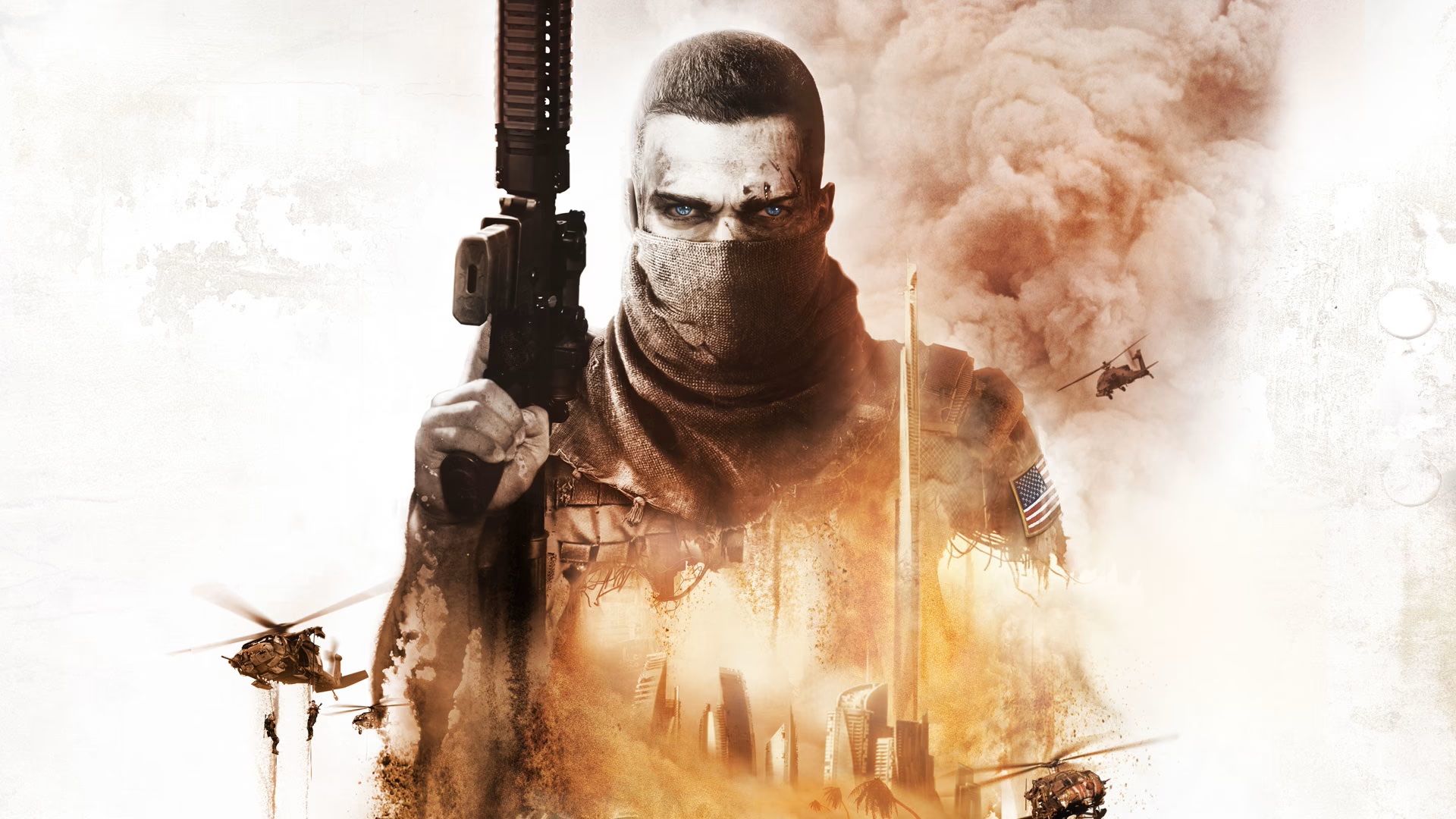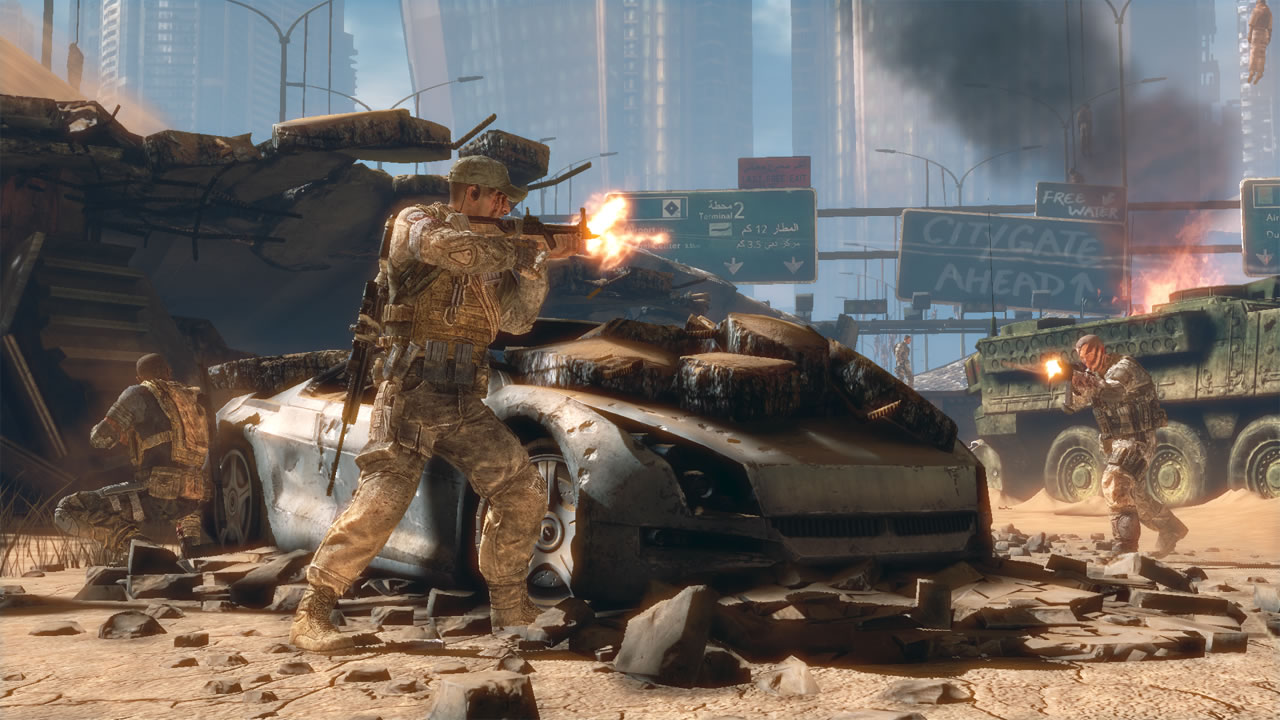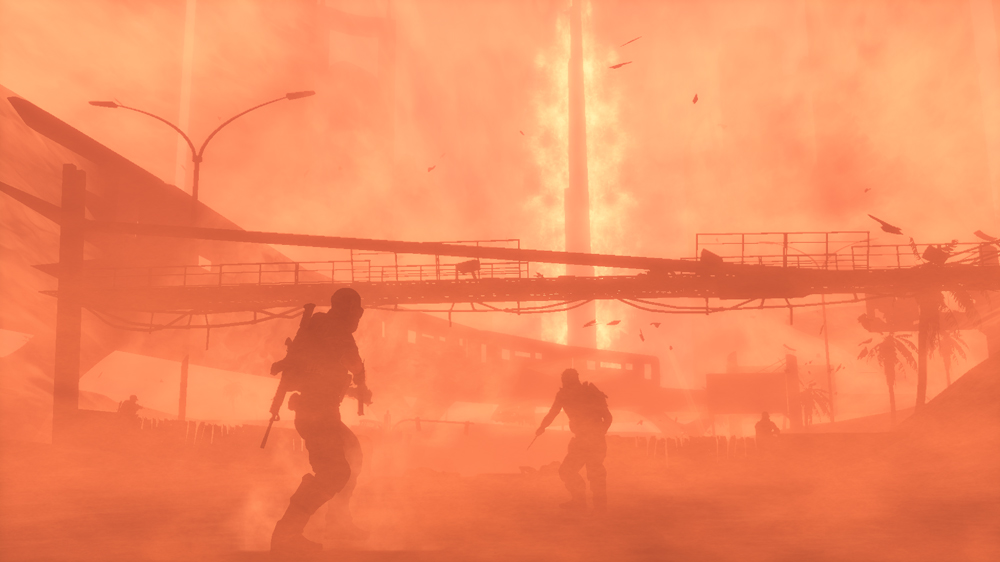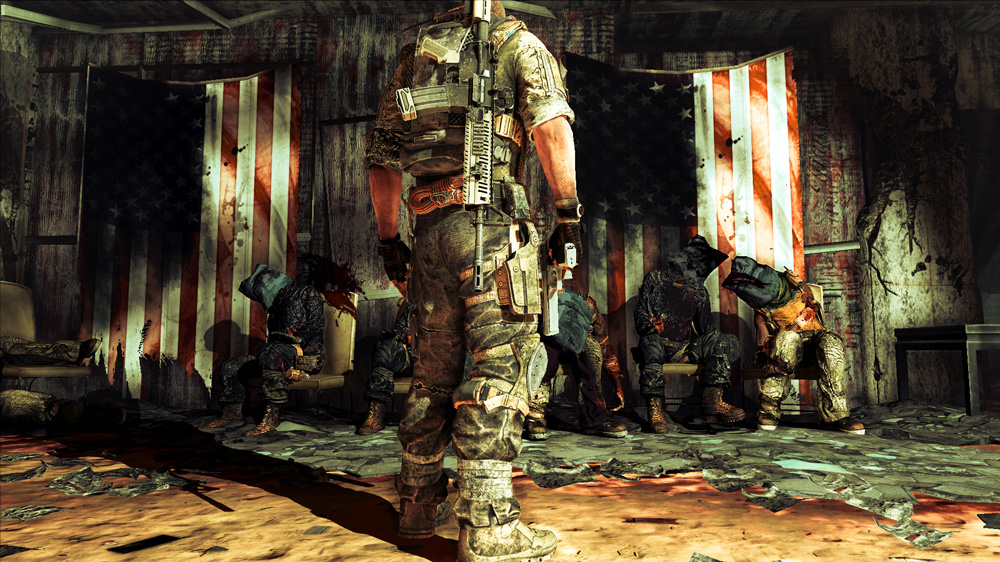10 years on, Spec Ops: The Line is a potent indictment of Western warmongering
Straight shooter

Spec Ops: The Line, a military cover shooter originally released in 2012, opens with a helicopter sequence so over the top it’s as if Michael Bay drank the world’s supply of Red Bull. It’s also, despite appearances, the first hint that Spec Ops isn’t just another ooh-rah mil-shooter. Quite the opposite: it’s an indictment of war, battlefield realpolitik, and all the usual justifications, excuses, and situational morality applied to war zones that most video games don’t even touch on.
Which is quite something for a game from a genre (and a medium) which may as well have ‘guns out, fun’s out’ as its motto, but here we are. The plot takes its inspiration from the 1979 Vietnam War film Apocalypse Now – and as such, like that movie, the 1899 novella Heart of Darkness – and on the surface things seem straightforward. As US Army Captain Walker, your mission is to lead a three-man Delta Force recon team into Dubai, which has been devastated by ecological disaster and is half buried in a sandstorm. Once there you’re to rescue any survivors, as well as find out what happened to Colonel John Konrad, commander of the 33rd Battalion, who led a previous rescue mission gone awry. Or are you?
Content warning: some of the further reading linked to in this piece includes imagery that may be distressing.

Nobody knows you’re there: command wants it off the books, and so you and your team are left to figure it out as you go along. ‘It’, however, is a moving target. Spec Ops has an intentional dreamlike quality. There are no heavy-handed mission intros, no maps, no plans, nothing. Just three unwise men on the road to hell, with no idea how they got there nor where they’re going.
Laying in wait is death, despair, and destruction. The situation soon deteriorates further. Fleeing civilians caught on the highway are reduced to skeletal remains, which call to mind the opening, future-set scene of Terminator 2 – twisted bodies, trapped in their vehicles. Walker and his team are rightly appalled. They like to imagine themselves as good men. That notion is soon tested.
Coin op
Tested, too, is the player’s capacity for following orders unblinkingly. One of your earliest encounters with the ‘enemy’ sees Walker and his team come into contact with armed ‘insurgents’. One of your team is just about to speak to them in their own language, but in the confusion and the shouting, a prompt pops up: shoot the glass in the bus behind them to crush the soldiers with compacted sand. Naturally, you do. Just following orders, after all.
It’s a clever moment, using gaming’s strengths – and the player’s conditioning, so to speak – to make a point about conflict, and Spec Ops continues in this vein. As the game goes on, the usual ‘rules’ are bent and broken. Those new to Yager’s opus may be surprised to find that the chief opponents aren’t ‘insurgents’ or ‘terrorists’ – not in the traditional Western view at least. Your enemy is the US Army itself, with a dollop of everyone’s favorite meddlers, the CIA, on the side.
Get daily insight, inspiration and deals in your inbox
Sign up for breaking news, reviews, opinion, top tech deals, and more.

Not that anyone can ascertain exactly why they’re really fighting. The 33rd, Walker insists, has gone ‘rogue’. Konrad led them to Dubai after their previous tour in Afghanistan ended, after which point an exhausted fighting force were presumably overwhelmed by not only the elements but their own failings, ethically and operationally. The CIA’s involvement makes the situation worse still, as usual, and both the Company and the 33rd’s attempts at running their usual COIN (counter-insurgency) playbook – favored in the real-world Iraq and Afghanistan Wars by US generals – ends in predictable disaster, creating more enemies than they can kill and leading to brutal civil war. They commit atrocities against the city’s inhabitants and, eventually, themselves.
But then, so do you. In the game’s most infamous sequence, Walker makes the call that the 33rd has betrayed the US, and as he’s giving the orders now, they are fair game to be eliminated by any means necessary. Acting on incomplete (and as such unreliable) intelligence, Walker finds his own WMD, and then uses it.
Dubya-MD
Stumbling across a makeshift enemy encampment overlooked by artillery, Walker and his squad discover that the weapon uses white phosphorus, a deeply controversial incendiary substance which was used by US forces in the Iraq War to drive enemies out of cover. The wounds it inflicts are horrendous, leaving little but horribly charred corpses. Walker and his team have already decried its use in Dubai’s streets in the lead up to the discovery of the cannon, but that was then. This is now.
Arming the weapon in spite of his team’s pleading not to, Walker uses its targeting system to identify the enemy – his former brothers in arms. As in Call of Duty 4’s Death From Above, you use an thermal imaging camera to detect your foe, before raining munitions down on them. The targets look legitimate, even if the weapons you’re using are not: as well as infantry, the place is loaded with arms and vehicles. As the player sees Walker’s face, cast in darkness in the glare of the terminal, you open fire.
The scene is reminiscent of Sarah Connor’s dream of nuclear war in Terminator 2
When it’s all over bar the screaming – and the chilling, mechanical tick-tick-ticking of the weapon’s targeting system – Walker and his crew head down through the aftermath. What greets them is the moment that snaps their minds. The scene is reminiscent of Sarah Connor’s dream of nuclear war in Terminator 2 (the encampment even features a large statue of children playing, as if on a playground). There were US forces here, but what your fancy thermal imaging system doesn’t discriminate between is soldiers and civilians: it’s all the same meat. By firing it, you’ve killed dozens of innocent people, including children.

Spec Ops doesn’t shy away from showing you exactly what you’ve done, and unlike Sarah Connor’s nightmare, the bodies don’t ‘fly apart like leaves’. Instead, grotesquely burned and frozen in terror and shock at exactly the moment you fired on them, they remain a monument to what war really is for those caught up in it. The sequence lingers on one particular set of victims, a mother attempting to protect her child. It bears a resemblance to the Holocaust artwork Lama Sabachthani, by Morris Kestelman, as does the rest of the image: the endless dead, discarded and piled high on each other, their hollowed-out eyes accusatory even in death. For their part, Walker and co, the hollow men, move on.
Long Kon
Physically, at least. As you finally meet Konrad, he’s painting that very scene, trapped forever as you are within it. By now, a few hours removed from the act, you’re more than aware that Walker is at the very least an unreliable narrator. You’ve committed more atrocities, this time using your own eyes to guide you, not given the so-called excuse of collateral damage. By the increasingly discordant electric version of Star Spangled Banner that plays, and by the progressively ragged, upside down Old Glory flag, you’re ever more frequently asked if you believe what you have done. Eventually, Spec Ops asks you the question point blank. That helicopter sequence is overblown because, perhaps, some of it didn’t happen. Or maybe not like that. But you did kill all those people. And for the most part, you liked it.
Spec Ops: The Line has aged, mechanically. Never boasting the most intricate of systems, its limitations as a third-person cover shooter with fiddly controls and no roll button are more stark than ever. But this isn’t the point. Released into an environment where military shooters like Call of Duty: Modern Warfare 2 and Homefront were idly wondering what would happen if America was invaded, casting themselves as the heroes, Spec Ops gave us allusions to failed wars and American private military contractors strung up over the Euphrates bridge in Iraq. It asked how seemingly good people go bad. The answer is: it’s frighteningly easy. As such, it’s closer, if anything, to The Last of Us than anything else in the mil-shooter space. A game in which an inability to recognise the truth leads to inescapable moral, physical, and spiritual oblivion.